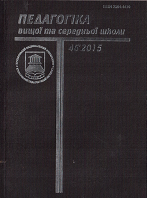The content, tools and structure of the diagnostic of future pharmacists’ training level in higher educational institutions of Eastern European countries
DOI:
https://doi.org/10.31812/educdim.v46i0.2540Keywords:
content, tools, structure, diagnosis, level of training, training cycles, practical skillsAbstract
Budanova L. G. The content, tools and structure of the diagnostic of future pharmacists’ training level in higher educational institutions of Eastern European countries.
The article deals with the content, tools and structure of the diagnostic of future pharmacists’ training level in higher educational institutions of Eastern European countries according to their training level, distribution of educational disciplines on training cycles. Knowledge and practical skills that are necessary for the diagnostics of specialist training for pharmaceutical industry have been analyzed. The need for deeper study of foreign higher pharmaceutical education has caused an urgent requirement of time to achieve a higher level of global pharmaceutical sector development.
So, it becomes important to analyze the positive experience in reforming foreign higher
pharmaceutical education. The experience of Eastern European countries is close to Ukraine.
Eastern European and Ukrainian models of future pharmacists’ professional training have much in
common and distinguishing features caused by historically formed traditions and national features,
socio-economic and spiritual development of states, conceptual foundations of educational policy.
So, the conducted research has found out that in the educational process the integration of
humanitarian and professional component in the training of future specialist for pharmaceutical
industry; individualization and differentiation of education; professional orientation in teaching
humanitarian, socio-economic and natural sciences haven’t been implemented.
Downloads
Downloads
Published
Issue
Section
License
Copyright (c) 2015 Ліана Георгіївна Буданова

This work is licensed under a Creative Commons Attribution 4.0 International License.




